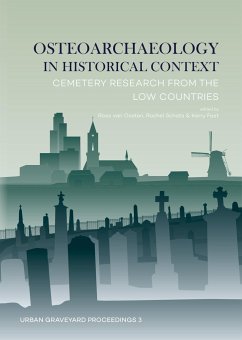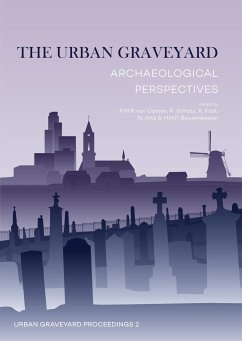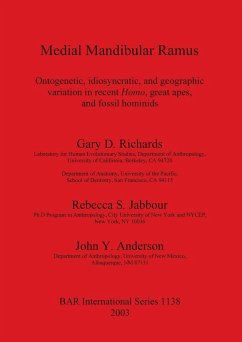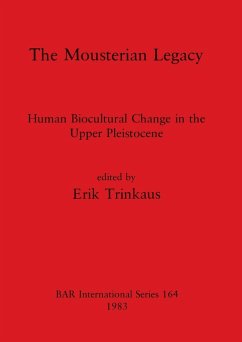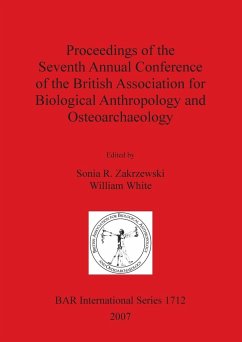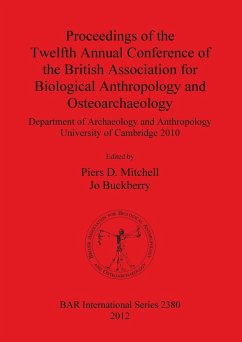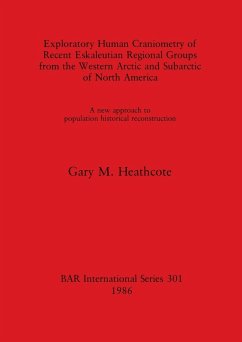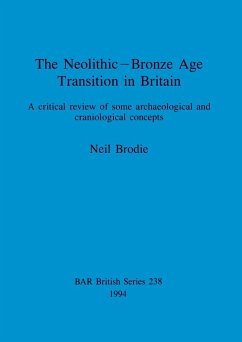
Osteoarchaeology in historical context
Versandkostenfrei!
Versandfertig in 1-2 Wochen
33,99 €
inkl. MwSt.

PAYBACK Punkte
17 °P sammeln!
Osteoarchaeology is a rich field for reconstructing past lives in that it can provide details on sex, age-at-death, stature, and pathology in conjunction with the cultural, social, and economic aspects of the person's environment and burial conditions. While osteoarchaeological research is common in the Low Countries, many of the studies done on the excellent skeletal collections remain unpublished and therefore unavailable to a larger audience. Following on the Urban Graveyards volumes, Osteoarchaeology in historical context contributes to the dissemination of cemetery research in the Low Cou...
Osteoarchaeology is a rich field for reconstructing past lives in that it can provide details on sex, age-at-death, stature, and pathology in conjunction with the cultural, social, and economic aspects of the person's environment and burial conditions. While osteoarchaeological research is common in the Low Countries, many of the studies done on the excellent skeletal collections remain unpublished and therefore unavailable to a larger audience. Following on the Urban Graveyards volumes, Osteoarchaeology in historical context contributes to the dissemination of cemetery research in the Low Countries. Several important skeletal collections are examined in their historical contexts to better understand past living and dying. Osteoarchaeological data are combined with information on burial location, orientation, and grave goods. In doing so, this volume expands our knowledge of contextual cemetery research in the Low Countries and serves as a starting point for comparative research. ContentsImmigrants in Vlaardingen. Archaeological research at a cemetery dated c 1000-1050Tim de RidderDigging up the dead in Eindhoven: The choir and churchyard of St. Catharine's, 1200-1850Nico ArtsThe monastic cemetery of the Broederenkerk in Zutphen: For monks only?Steffen Baetsen & Michel GrootheddeIn sickness and in health: An archaeological and osteoarchaeological analysis of St. Gertrude's infirmary in Kampen (1382-c. 1611)Rachel Schats & Michael KlompDiversity in death: skeletal evidence of burial preferences in a late to post-medieval convent in Aalst (Belgium)Jessica L.A PalmerTaking sides: an osteoarchaeological analysis of human skeletal remains from the south and north sides of St. Andrew's Church (Andreaskerk) in Hattem, the Netherlands.Barbara Veselka & Michael KlompThe cursed side: A folk belief evidenced by documentary records in 's-Hertogenbosch (1782-1858)Roos van OostenMethods of ageing and sexing human dry bone put to the test Looking back on the 1987-1988excavations in the Broerenkerk in ZwolleNico Aten & Hemmy Clevis



